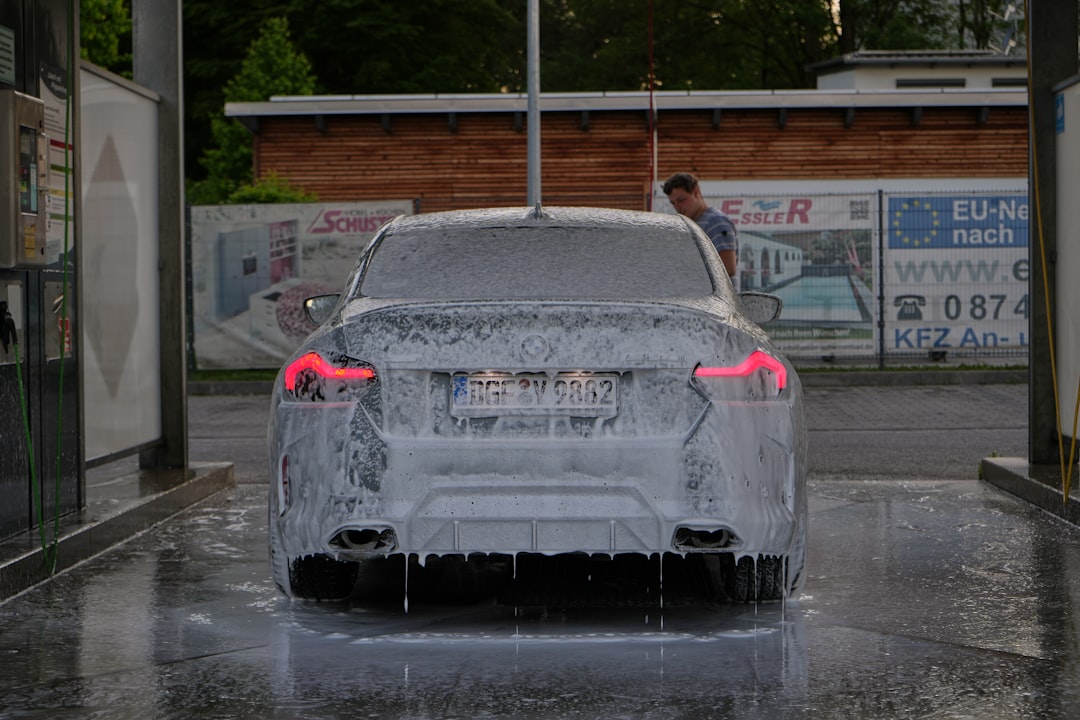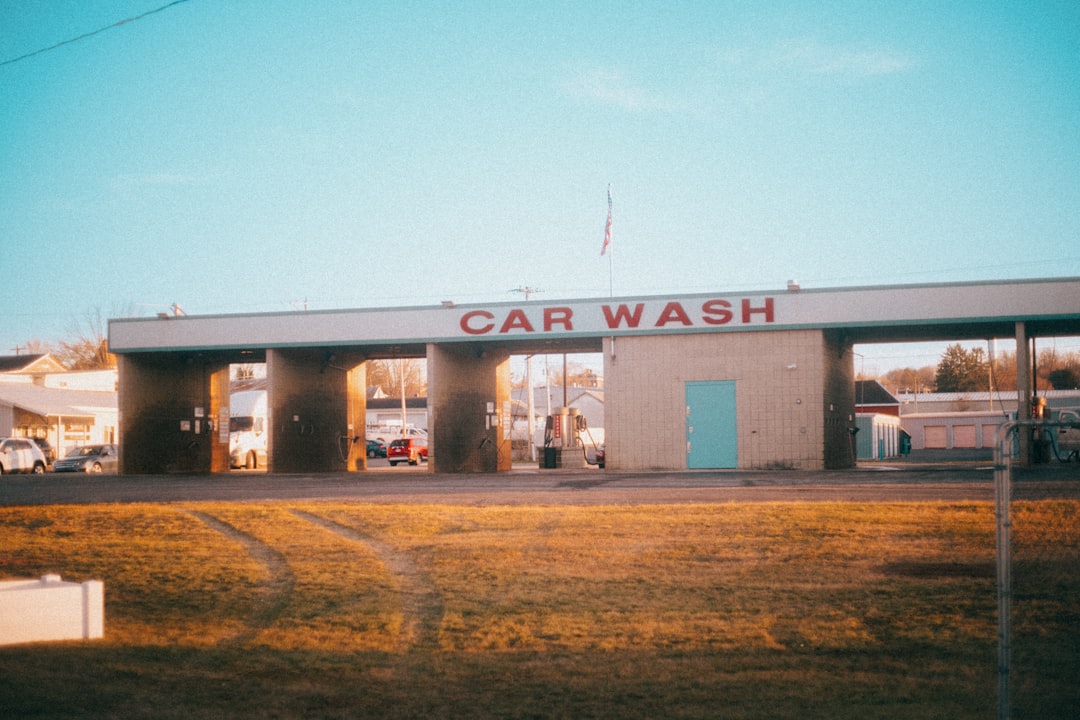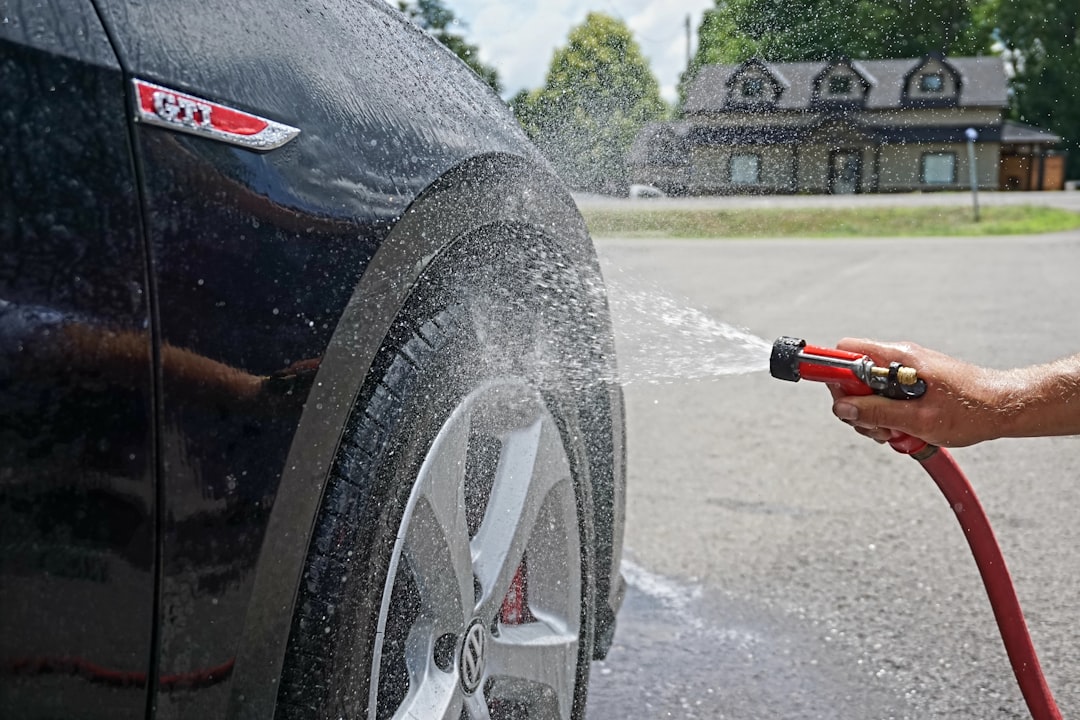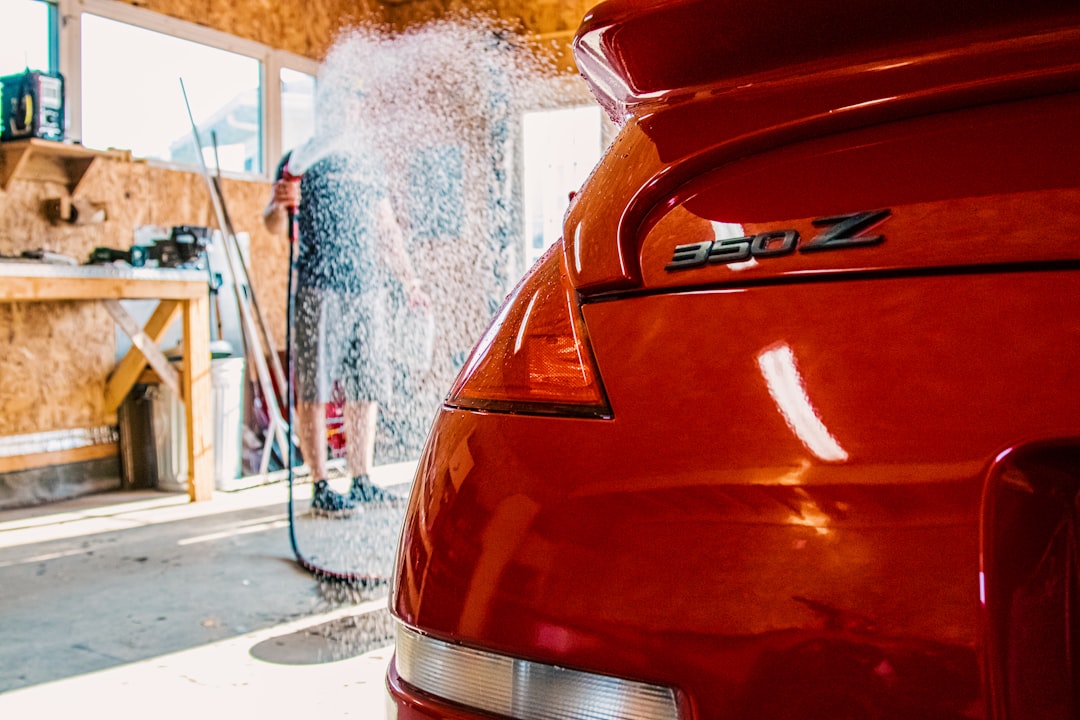

Engage prospects with a scan and streamline customer engagement with FREE QR code marketing tools by Sona – no strings attached!
Create a Free QR CodeFree consultation

No commitment

Engage prospects with a scan and streamline customer engagement with FREE QR code marketing tools by Sona – no strings attached!
Create a Free QR CodeFree consultation

No commitment
Mobile car wash services are experiencing a rapid surge in demand as busy consumers prioritize convenience, eco-friendly solutions, and on-the-go service experiences. The challenge is that many of these interactions still occur in the physical world, where attention is hard to measure and interest can fade quickly. Street-side promotions, car park flyers, and even the service visit itself often fail to connect to digital outcomes like bookings, reviews, or loyalty enrollment.
Traditional tactics like paper coupons and door hangers create another bottleneck: they are difficult to track, easy to misplace, and impossible to optimize once printed. High-intent prospects see your offer, then leave no digital trail. Anonymous interest never materializes as revenue because the signal is never captured.
QR codes close this physical-to-digital gap by making every touchpoint scannable, measurable, and actionable. When you place QR codes intelligently across vehicles, uniforms, equipment, and print materials, you turn passing curiosity into immediate action: a booking, a quote request, a review, or a membership purchase. This article offers frameworks, examples, and step-by-step guidance for using QR codes to create frictionless customer journeys, improve conversion rates, and make smarter, data-driven marketing decisions.

Mobile car wash providers often lose high-intent customers at the moment that matters most: when attention is captured offline, but there is no clear, immediate path to act online. A driver sees your team at work, a neighbor receives a flyer, or a fleet manager walks by your pop-up, then interest fades because the next step is not obvious or takes too much effort. QR codes fix this by transforming every physical impression into a direct path to booking, payment, or follow-up.
Shifting from paper-centric processes to QR-powered flows reduces friction for customers and unlocks measurement for your team. Printed brochures become dynamic booking gateways, manual sign-up sheets become digital forms with automated follow-up, and static coupons become updatable offers. Each scan generates data that helps you refine creative, placement, and promotions. The result is a full-funnel system that moves people from awareness to conversion with fewer drop-offs and clearer attribution.
If you are replacing outdated workflows, start with the biggest friction points. Swap paper forms at events with QR-enabled instant quote requests, replace printed price sheets with dynamic pricing pages, and convert door hangers into trackable offers that update without reprinting. With a platform like Sona QR, you can manage all codes centrally, edit destinations in real time, and sync scan events to your CRM and ad platforms for precise reporting and retargeting.

QR codes address specific pain points that car wash operators face when trying to connect offline activity with online conversions. A well-placed code on a van wrap, a windshield flyer, or a technician’s apron creates an instant bridge to a digital action. No one needs to remember a URL or keep a paper coupon. Scanners can book, pay, review, or learn about eco-friendly processes in seconds, which removes the most common barriers to response.
The value extends beyond convenience. Dynamic QR codes allow you to change offers and destinations on the fly, which is vital when pricing, promotions, or availability shift with demand. You can A/B test headlines, swap seasonal packages, or shift scanners from a booking page to a quote form if schedules fill up. Every scan also becomes a data point that tells you where demand is strongest, which creative performs best, and what times or locations deserve more investment.
In practice, this means your appointment cards can double as loyalty signup links, your invoices can include a QR for tipping or recurring service enrollment, and your A-frame signs can direct to a quote page that pre-fills based on the parking lot location. Every surface becomes a conversion surface.
Mobile car wash operations benefit most from QR formats that simplify core actions: booking, requesting quotes, saving contact details, and getting support without friction. The right format depends on the intent of the touchpoint and the outcome you want to drive. Dynamic QR codes are recommended for most marketing and operations use cases because they capture analytics, support retargeting, and can be updated as offers change.
Static codes can work for evergreen destinations such as a general About page, but they miss out on performance measurement and flexibility. For measurable growth and effective optimization, choose dynamic codes that can carry UTM parameters and integrate with your CRM.
When in doubt, consider the next best action you want a scanner to take in that moment. For a parked car flyer, booking is likely the best destination. For a van wrap spotted from a distance, a short URL plus a QR that opens a quick quote form can capture interest on the spot or later at home.

Many car wash operators invest in physical assets without knowing which ones actually generate business. QR codes turn these assets into testable growth levers. By placing distinct, trackable codes on each surface and in each location, you can identify high-intent hotspots, refine creative, and concentrate spend where you see the highest scan-to-booking conversion rates.
Start with high-traffic areas where customers are already thinking about their vehicles. Then layer in QR-specific best practices such as clear CTAs, short benefit statements, and strong contrast for scannability. Measure results weekly and reallocate inventory based on real data.
Optimizing QR placements is an ongoing process. Adjust spacing, height, and lighting conditions for signs, vary CTA language by context, and experiment with incentives. Measure scans per impression where possible and track scan-to-quote or scan-to-booking rates to identify the winning combinations.

Customers often intend to act, then get distracted. QR codes help you capture that intent in the moment and route it to an action that drives revenue or loyalty. Choose use cases that align with your most common touchpoints, then measure results and scale the winners.
Well-executed QR use cases also streamline operations. They reduce manual data entry, speed up payments, and increase the volume of reviews and referrals. Each scan adds to your understanding of who is engaging, where, and why, so future campaigns can be more relevant and profitable.
You can extend these use cases with complementary flows. For example, a QR on an invoice can prompt a tip or an upgrade to a monthly subscription. A QR on a water recycling unit can explain your eco practices, encouraging eco-conscious customers to choose higher-value packages and refer friends.
Every scan is a live intent data guide signal. When you deploy unique QR codes at different stages of the journey, you gain the ability to segment audiences precisely and retarget based on real behavior. This increases relevance, reduces wasted ad spend, and ensures warm leads do not cool off without follow-up.
Start by mapping your offline touchpoints to funnel stages. Use one set of codes for awareness, such as vehicles and neighborhood flyers, another for consideration, such as event tables and pricing sheets, and a third for conversion, such as checkout receipts and post-service cards. Then apply tags and UTMs so each scan flows into the correct segment in your CRM and ad platforms.
For mobile car wash providers, two valuable distinctions are homeowner vs. fleet manager and first-time buyer vs. subscriber. Use QR tags and forms to identify each group. Then build sequences that reflect motivations, for example, convenience perks and maintenance reminders for homeowners, volume discounts and scheduling APIs for fleet managers. With Sona QR, each scan can populate the right list and trigger the right workflow without manual effort.
QR codes work best when they are embedded across your existing marketing channels, creating a single connected system. The goal is to let customers take the next step instantly, no matter where they encounter your brand. At the same time, you gain a unified data set that attributes bookings and revenue to specific placements, creatives, and offers.
When you centralize QR management, you can update campaigns on the fly, run A/B tests across channels, and keep creative consistent. Use Sona QR to manage all codes in one dashboard, monitor performance, and stream scan data into your CRM to enrich contact records and trigger playbooks.
Integrating QR codes across channels transforms offline impressions into digital actions and ties them to metrics that matter. Over time, you will see a clear pattern of what works for each audience and location, which allows you to scale with confidence.
A crisp process keeps your QR strategy focused on measurable outcomes. Use the following steps to launch, learn, and scale. Each step should result in specific deliverables that align with revenue goals, not just engagement.
You can execute this workflow with simple tools, or accelerate it with Sona QR for dynamic code management, analytics, and CRM integrations. The key is consistency: define goals, deploy, measure, and iterate.
Start by identifying the friction you want to remove and the metric you want to improve. Do you need more bookings from neighborhood flyers, better follow-up from event conversations, or more reviews after service? Pick one use case per campaign so that your creative, CTA, and landing experience are tightly aligned.
Choose the format that best supports your goal. Dynamic QR codes are recommended for campaigns because they provide analytics, allow destination changes without reprinting, and support UTM tagging. Static codes can work for evergreen contact pages, but they limit optimization and measurement.
Design affects trust and scannability. Use high-contrast colors, adequate quiet space, and a clear CTA placed immediately next to the code. Add a brief benefit statement to explain why scanning is worth it. Before printing at scale, test across a range of devices and distances.
Roll out your codes where your target audience is most likely to engage. Stagger deployment so you can compare placements and creatives. Assign a unique code to each channel and physical asset so that every scan maps to a specific source.
Measurement is what turns QR experiments into a growth engine. Instrument every code with UTMs, monitor scan and conversion data, and adjust creative, placement, or offers based on the results. Build a cadence of weekly reviews and monthly roll-ups.

For years, offline attribution in mobile car wash has been hard to quantify. You could print flyers and wrap vans, but proving which assets fed the pipeline was guesswork. With modern QR code management and analytics, you can track the journey from scan to revenue and justify spend with confidence.
Effective tracking starts with consistent tagging and ends with CRM-level attribution. Use unique dynamic codes for each channel, apply UTM parameters to destinations, and unify data across offline and online touchpoints. Then connect scan events to leads, quotes, invoices, and repeat bookings to understand lifetime value by source.
The result is a closed-loop system where every dollar of spend is accountable. You can defend budgets, scale winners, and treat QR codes as a central pillar of performance marketing, not a side experiment.
Once your first campaigns are running, small improvements to design, placement, and follow-up can compound into significant gains. Focus on clarity, measurement, and automation. Train your field team to promote the scan and handle objections gracefully.
Creative placements can deliver outsized results when they align with customer motivation. A QR on a rain-check card after a storm, a code on a dash hanger with next-wash savings, or a QR on equipment with sustainability stats can spark timely action and differentiate your brand.
Two creative examples to test: print a QR on tip cards that routes to a one-tap tipping and review page, and place a QR on invoices that offers a discount for enrolling in a monthly plan. Both tactics remove friction and convert positive sentiment into measurable outcomes.
QR codes have moved from novelty to necessity for mobile car wash operators who want to turn physical impressions into digital outcomes. They enable instant engagement at the point of curiosity, connect every surface to a next step, and generate data that improves decision-making over time. When you deploy them with intention, you improve conversion rates, lift repeat bookings, and unlock reliable attribution.
The strategic win is a connected customer experience that moves people from awareness to action with less friction. A scan at a van wrap, a scan at a gas pump, a scan after a wash, each becomes a measurable signal that feeds your CRM, powers retargeting, and accelerates revenue. With Sona QR, you can generate dynamic codes in minutes, manage them centrally, and connect scans to revenue through Sona.com’s attribution tools.
Start creating QR codes for free.
QR codes have revolutionized mobile car wash services by transforming simple customer interactions into powerful conversion opportunities. From streamlining customer acquisition to enhancing the booking experience and offering seamless upsells, QR codes enable mobile car wash providers to engage clients effortlessly while capturing valuable data that drives growth. Imagine instantly knowing which promotions bring in the most bookings and having the flexibility to update offers on the fly without printing new materials.
With Sona QR, creating dynamic, trackable QR codes tailored for your mobile car wash business is effortless. Update campaigns in real time, monitor every scan, and link customer engagement directly to revenue—all from one intuitive platform. No more guesswork or missed chances, just smarter marketing that turns every scan into a loyal customer.
Start for free with Sona QR today and accelerate your mobile car wash service’s growth by making every interaction count.
QR codes can be placed on service vehicles, uniforms, equipment, flyers, and signage to provide customers with instant access to booking pages, quote requests, reviews, or loyalty programs, creating a seamless link from physical interactions to digital actions.
QR codes make offline touchpoints scannable and measurable, reduce customer friction, enable dynamic updates without reprinting, provide detailed tracking and attribution, increase conversion rates, and help optimize marketing spend based on real data.
Start by defining your campaign goal and audience, choose a dynamic QR code format for flexibility and tracking, design the code with clear calls to action and high contrast for easy scanning, test across devices and environments, then deploy on high-impact channels with unique codes per asset.
Effective uses include placing QR codes on windshield flyers for appointment booking, on service vans for instant quotes, on post-service cards for reviews and loyalty enrollment, and on invoices or equipment for tips, subscriptions, and educational content about eco-friendly services.
QR codes provide an immediate, easy digital path from offline interest to actions like booking or payment, reduce drop-offs by eliminating manual steps, enable tracking to optimize campaigns, and support automated follow-ups that nurture leads and boost repeat business.
Use Sona QR's trackable codes to improve customer acquisition and engagement today.
Create Your FREE Trackable QR Code in SecondsJoin results-focused teams combining Sona Platform automation with advanced Google Ads strategies to scale lead generation

Connect your existing CRM

Free Account Enrichment

No setup fees
No commitment required

Free consultation

Get a custom Google Ads roadmap for your business






Launch campaigns that generate qualified leads in 30 days or less.
